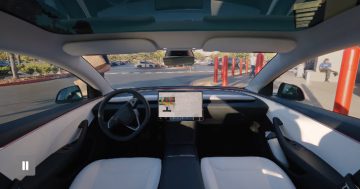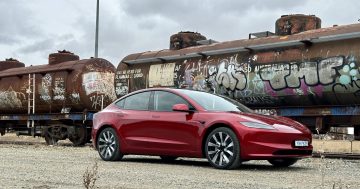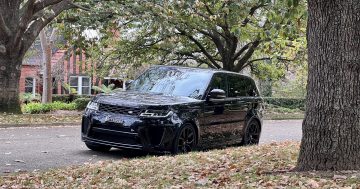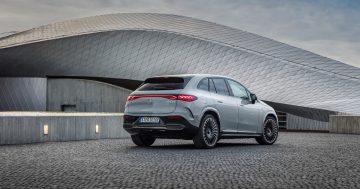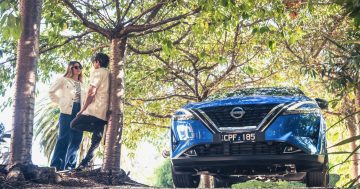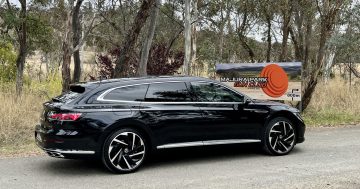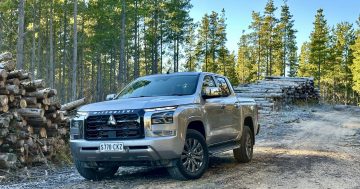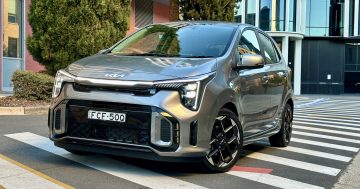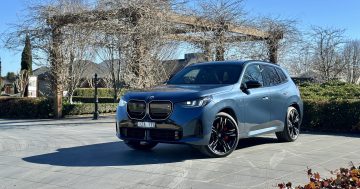By Karl Peskett.
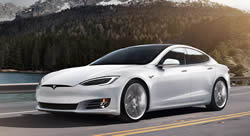 The European New Car Assessment Program (EuroNCAP) released an interesting report last week, testing carmakers’ autonomous driving claims. And the final word on the subject was that despite many claims, “no car on the market today offers full automation or autonomy.”
The European New Car Assessment Program (EuroNCAP) released an interesting report last week, testing carmakers’ autonomous driving claims. And the final word on the subject was that despite many claims, “no car on the market today offers full automation or autonomy.”
One of the victims of the results has been Tesla, with EuroNCAP singling the company out for criticism. It tested Tesla’s Model S where the “Full Self-Driving Capability” option had been fitted, and slammed the manufacturer for implying that its vehicle featured “a fully automated system where the driver is not required”.
While the Model 3’s Enhanced Autopilot says it’s able to keep the car within a lane, automatically change lanes without driver input, enter or exit a freeway on its own, and self-park when approaching a parking spot, there are multiple occasions where the vehicle cannot think for itself.
Sure, it can and be summoned to and from a garage when required, but when the self-drive option was ticked, it seemed to be causing some confusion.
EuroNCAP stated that its studies showed that Tesla’s “Autopilot” and “Enhanced Autopilot” titles have misled people to believing that it is able to drive all by itself. “The limited scenarios tested clearly indicate that is not the case, nor is such a system legally allowed”, said EuroNCAP. “Overall, the Tesla system is primarily in control with a risk of the driver becoming over-reliant”.
But in a strange coincidence, only a day after EuroNCAP published its study, the “Full Self-Driving Capability” option has been removed from Tesla’s website, and only the Enhanced Autopilot function is available. It seems the company is looking to clarify things.
Hopefully those who have already opted for the full self-drive addition will also be informed as to its limitations.
Merc to offer a plug-in hybrid SUV by 2020
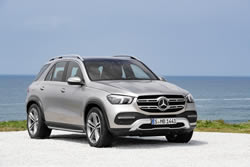 Just a few weeks ago, Mercedes-Benz revealed its 2019 GLE SUV, a machine that’s set to take on the Volvo XC90, BMW X5 and Audi Q7. One of the first things we learned about it was that it would see the return of the inline six-cylinder, which is going to be a very interesting comparison with Bimmer’s six in the X5.
Just a few weeks ago, Mercedes-Benz revealed its 2019 GLE SUV, a machine that’s set to take on the Volvo XC90, BMW X5 and Audi Q7. One of the first things we learned about it was that it would see the return of the inline six-cylinder, which is going to be a very interesting comparison with Bimmer’s six in the X5.
There will also be a four-cylinder petrol and diesel (both turbocharged, of course), and the one we’re all waiting for is the forthcoming AMG version. No, not the GLE 43, we’re talking the GLE 63 AMG.
But before we see the powerhouse version, Merc has revealed that it’s already working on a plug-in hybrid version to fill out the range.
Ola Kallenius, the head of Mercedes-Benz development said that “the GLE will be the first car with a 100 km range on a plug-in hybrid in the WLTP cycle.” This bests Audi’s Q7 PHEV and even the significantly more expensive Bentley Bentayga PHEV.
Kallenius wouldn’t be drawn on whether the engine that’s linked to the electric motors is a petrol or a diesel. But our bet, given the world’s push to eradicate diesel from passenger vehicles, is that it will be a petrol engine. Of course, we’ll have to wait and see.
Similar tech will be used across the Mercedes-Benz lineup with everything from the diminutive A-Class through to the flagship S-Class will be getting some form of electrification. But that’s news that won’t be, ahem, shocking.
Connected carmaker ditches connectivity
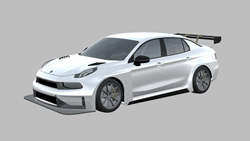 While most people have heard of Geely, the Chinese owner of Volvo, most people haven’t heard the name Lynk & Co. It’s a Chinese car manufacturer that is launching a subscription model for its vehicles, so you can pay a certain amount each month and swap over vehicles after a certain term.
While most people have heard of Geely, the Chinese owner of Volvo, most people haven’t heard the name Lynk & Co. It’s a Chinese car manufacturer that is launching a subscription model for its vehicles, so you can pay a certain amount each month and swap over vehicles after a certain term.
In addition, all of its vehicles will be connected to the web full time, and there’s a dedicated concierge service. But soon, a Lynk & Co vehicle won’t be connected at all.
Polestar, a division of Volvo, looks after the racing side of the company. And now Lynk & Co will be partnering with Polestar and Cyan Racing to create its own touring car.
It will use a 2.0-litre turbocharged four-cylinder matched to a sequential gearbox and front-wheel-drive, just like most touring cars. And it’s going to make a potent 261kW. Sure, it doesn’t sound like much, but remember, these cars weigh just a bit more than a roll of Alfoil, so the power-to-weight ratio is exceptional.
Clearly, the question is why would you do that? After all, the established brands in the FIA World Touring Car Race series are Alfa Romeo, Audi, Seat, Honda, Hyundai, Peugeot and Volkswagen. That’s a formidable lineup.
The answer, of course, is publicity. Imagine a Chinese carmaker taking it to the big boys in town. The headlines would certainly write themselves.
We’ll keep our ear to the ground to see whether Lynk & Co can make some headway.


